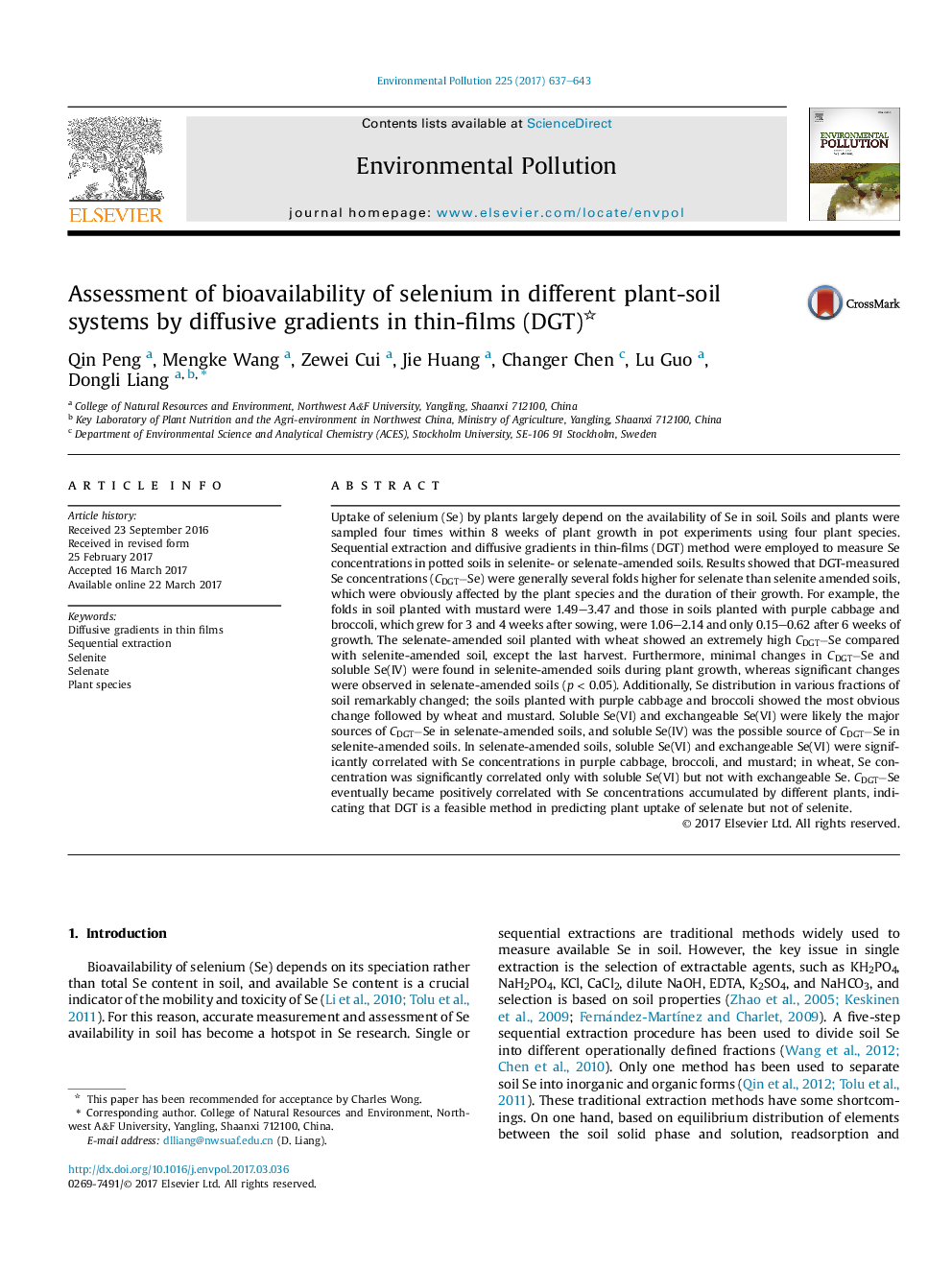| کد مقاله | کد نشریه | سال انتشار | مقاله انگلیسی | نسخه تمام متن |
|---|---|---|---|---|
| 5748973 | 1619148 | 2017 | 7 صفحه PDF | دانلود رایگان |

- Diffusive gradients in thin-films (DGT) method to assess bioavailability of Se in soil.
- DGT-measured Se in selenate-treated soil was generally higher than that in selenite-treated soil.
- Soluble Se(IV) was the possible source of DGT-measured labile Se for selenite treatment.
- DGT-measured Se likely derived from soluble and exchangeable Se(VI) for selenate treatment.
- DGT could be a promising method for predicting plant uptake of selenate.
Uptake of selenium (Se) by plants largely depend on the availability of Se in soil. Soils and plants were sampled four times within 8 weeks of plant growth in pot experiments using four plant species. Sequential extraction and diffusive gradients in thin-films (DGT) method were employed to measure Se concentrations in potted soils in selenite- or selenate-amended soils. Results showed that DGT-measured Se concentrations (CDGTâSe) were generally several folds higher for selenate than selenite amended soils, which were obviously affected by the plant species and the duration of their growth. For example, the folds in soil planted with mustard were 1.49-3.47 and those in soils planted with purple cabbage and broccoli, which grew for 3 and 4 weeks after sowing, were 1.06-2.14 and only 0.15-0.62 after 6 weeks of growth. The selenate-amended soil planted with wheat showed an extremely high CDGTâSe compared with selenite-amended soil, except the last harvest. Furthermore, minimal changes in CDGTâSe and soluble Se(IV) were found in selenite-amended soils during plant growth, whereas significant changes were observed in selenate-amended soils (p < 0.05). Additionally, Se distribution in various fractions of soil remarkably changed; the soils planted with purple cabbage and broccoli showed the most obvious change followed by wheat and mustard. Soluble Se(VI) and exchangeable Se(VI) were likely the major sources of CDGTâSe in selenate-amended soils, and soluble Se(IV) was the possible source of CDGTâSe in selenite-amended soils. In selenate-amended soils, soluble Se(VI) and exchangeable Se(VI) were significantly correlated with Se concentrations in purple cabbage, broccoli, and mustard; in wheat, Se concentration was significantly correlated only with soluble Se(VI) but not with exchangeable Se. CDGTâSe eventually became positively correlated with Se concentrations accumulated by different plants, indicating that DGT is a feasible method in predicting plant uptake of selenate but not of selenite.
The schematic of DGT and its deployment in soil paste.163
Journal: Environmental Pollution - Volume 225, June 2017, Pages 637-643